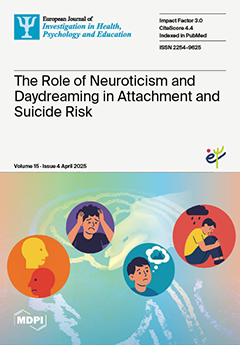This study examined the association between school climate, defined by social and academic environments, and mental wellbeing among 446 first-year upper-secondary students in eastern Norway (ISRCTN10405415). As part of the MOVE12 pilot study conducted in February 2023, a cross-sectional online questionnaire targeted approximately
[...] Read more.
This study examined the association between school climate, defined by social and academic environments, and mental wellbeing among 446 first-year upper-secondary students in eastern Norway (ISRCTN10405415). As part of the MOVE12 pilot study conducted in February 2023, a cross-sectional online questionnaire targeted approximately 600 students from five schools offering diverse academic and vocational tracks. Mental wellbeing was assessed using the Warwick–Edinburgh Mental Wellbeing Scale (SWEMWBS, scale 7–35), and the data were analyzed with stepwise multiple linear regression. The mean mental wellbeing score was 24.5 ± 4.3, with significant gender differences (
p < 0.05) but no variations between academic and vocational tracks. Self-efficacy was the strongest predictor of mental wellbeing (b = 0.236,
p < 0.001), followed by health satisfaction (b = 0.179,
p < 0.001), time spent with friends (b = 0.163,
p < 0.001), social isolation (b = −0.162,
p = 0.001), wellbeing in physical education (b = 0.129,
p = 0.002), and classroom climate (b = 0.128,
p = 0.007). These findings emphasize the critical role of self-efficacy, peer connections, and supportive classroom climates in promoting mental wellbeing. Addressing these elements of school climate can significantly enhance the mental health and overall outcomes of upper-secondary students.
Full article






